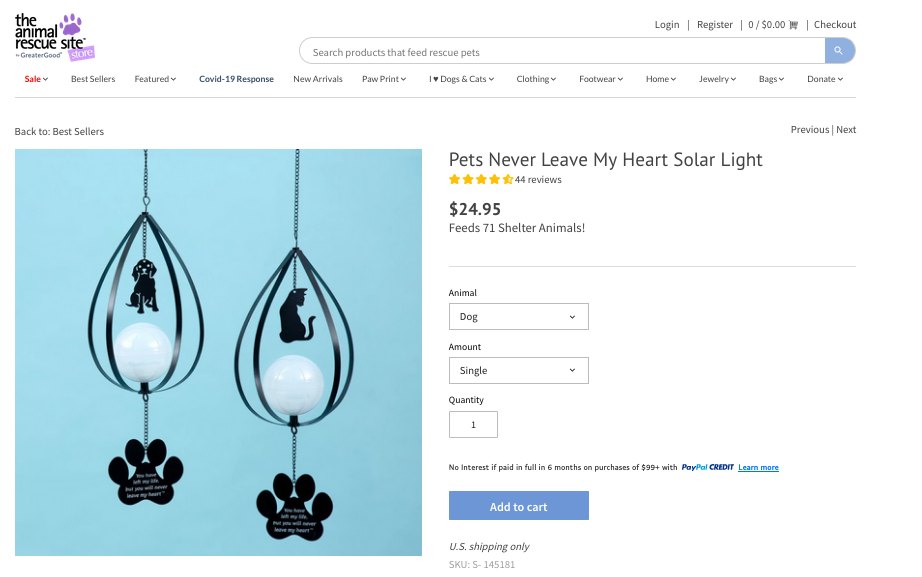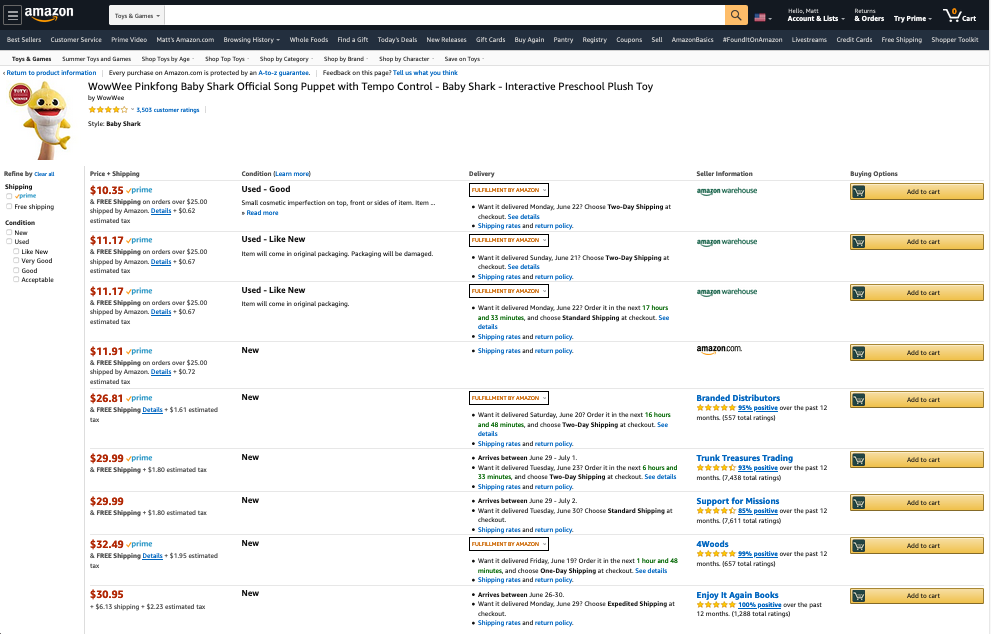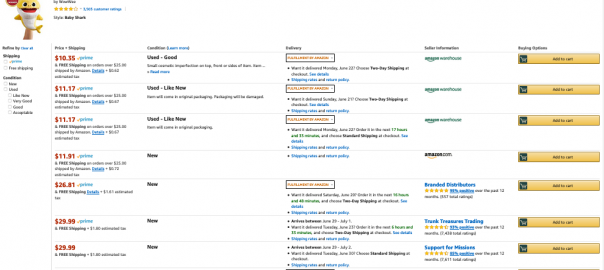
Ecommerce and brick-and-mortar stores are no longer two opposing sides; the great retail war is over. Rather than choosing one or the other, most successful companies today are opting for both.
By now, most retailers recognize that an ecommerce site can complement their brick-and-mortar store — the problem is that they don’t know where to start. The only commonality between selling online and selling in person is the “selling” part. Everything else is different: the sales strategy, product showcase, buyer journeys, customer acquisition, and return policies — just to name a few.
But rather than gatekeeping some would-be online entrepreneurs, we’ll give them a helping hand. In this guide, we’ll start on the ground floor of ecommerce and explain your options. Here, we’ll cover everything you need to know about starting an online web presence for your existing store…explained in a language even beginners can understand.
5 questions to ask yourself beforehand
Starting any new business is a great endeavor, so before you put in all that effort, it’s best to make sure it’s the right decision. Even if you have a successful brick-and-mortar brand, you should still treat your online expansion as a brand new business; after all, it still needs to attract its own customer base, more-or-less, from scratch.
So, before you invest all that time and money into launching an ecommerce component, ask yourself these 5 questions to see if it’s a viable option.
1. Is it viable to sell your particular products online?
Before you ask whether you should open an online store, your first question is whether you can. There are plenty of limitations for what you can sell online: some are legal issues, some are logistical, and some are just about customer preferences.
For starters, there are a lot of legal restrictions around selling firearms, liquor, medicine, and certain food types. You always want to check the laws regarding your products to see if you can legally sell them online — and that goes double for selling internationally.
Next, some products don’t make sense to sell online, even if they are technically legal. We’re mainly referring to large, heavy, or expensive products. Large and heavy products are a pain to ship, and if you’re offering free shipping they won’t be fiscally viable. Expensive products like fine jewelry can ship easily, but there’s a large risk that insurance doesn’t always cover.
Last, customers, in general, prefer to buy some types of products in person, such as food. There’s something about seeing food in person to determine its freshness, not to mention sending food through a lengthy delivery system can make customers squeamish. Similarly, the online apparel industry suffers because shoppers can’t try on clothes first.
That’s not to say you can’t sell food or clothes online — plenty of online brands have built successful ecommerce businesses in both those fields. Just understand the risks of these products beforehand so you can properly plan a counterbalance.
2. Is your model scalable?
The next question examines whether your online store can sustain itself if it’s successful. More orders mean more profit, sure, but they also mean more inventory storage space, larger stock renewals, complex shipping operations, more customer service reps, and additional resources dedicated to managing everything.
Plan out the logistics for if your ecommerce business does well and establish a plan for scaling upwards. Better to figure that out now than later.
3. Do you have time?
Ecommerce businesses take some time to set up and manage, at least if you’re serious about building an online brand. Some website builders can have your online store up in minutes, but you still have to put the time into orchestrating shipments, managing storage, and launching marketing campaigns, not to mention handling returns and regular bookkeeping.
The good news is that you can make your online store as big or small as you want, depending on how much time you want to dedicate. Just have a clear idea of how many hours in your day you want to allocate to your online brand, or how much you can spend hiring someone to manage it for you.
4. Are you tech-savvy?
Don’t panic. You don’t necessarily need to understand how the internet works to sell on it. Today, there are plenty of site-builders for people who don’t know anything about web design — you don’t need to learn how to program or hire a coder. Lots of platforms offer What You See Is What You Get (WYSIWYG) editors so building a web page is as simple as dragging and dropping.
But that doesn’t mean anyone can do it. For one thing, understanding graphic design helps in building an online store with a visual flow that supports the user experience — if you don’t understand those words, we recommend either researching a little more or enlisting the help of someone who does.
Digital marketing and social media are also large contributors to ecommerce success.
5. Do you have a niche?
One of the biggest advantages ecommerce has over brick-and-mortar stores is niche marketing. Traditional retailers are limited by their geographic area, so small niches have a hard time surviving because there aren’t enough individual shoppers. But with ecommerce, you can expand that geographical area exponentially and garner enough interested individuals over a larger area to sustain your business.
But in reverse, the opposite is true. If you’re launching a general ecommerce store with mass appeal, you’ll have to compete against giants like Amazon, eBay, and Walmart, which is impossible for a small and unknown brand.
In that scenario, your brand would be better off selling directly on those channels rather than competing against them — but the competition in those marketplaces is already steep enough, you’ll be more successful with a niche there as well.
That’s why it’s best to target a specific niche if you’re expanding into ecommerce. Follow the best guidelines for choosing your ecommerce niche, or choose one of the most lucrative ecommerce niches for 2020.
 Pet lovers are one of the most lucrative niches in ecommerce and can be further subdivided by the type of pet, i.e., dog lovers, cat lovers, bird lovers, etc. Via The Animal Rescue Site.
Pet lovers are one of the most lucrative niches in ecommerce and can be further subdivided by the type of pet, i.e., dog lovers, cat lovers, bird lovers, etc. Via The Animal Rescue Site.
Marketplace vs. shopping cart
Still interested in ecommerce after asking yourself the five questions above? Great! Let’s move on to more practical advice.
The first step in launching an online retail brand is knowing where to set up shop. Just as with brick-and-mortar retail, your location determines how much traffic you get and gives shoppers an idea of what kind of brand you are.
Moreover, you can launch as many online stores as you can handle. You don’t have to limit yourself to just one or two sites — in fact, while you get your feet wet, you might want to experiment with a few different options to see which performs best.
In general, we can divide your options into two separate categories: marketplaces and shopping carts.
- Marketplaces, like Amazon, Etsy, and eBay, are sites owned by other brands that allow third-party merchants like you to sell on them.
- Shopping carts, like Shopify, Constant Contact, or WooCommerce, allow you to build your own website with ecommerce capabilities, i.e., processing credit cards and sending sales orders.
Between the two, there are dozens of options, each with its own unique advantages and disadvantages. Let’s break down each category into its pros and cons so you can make the best decision.
Pros and cons of marketplaces
Marketplaces take care of the behind-the-scenes work on managing a website so you can focus more on selling than the technical details. However, this lack of control is a double-edged sword.
Pros of marketplaces
- Visibility and traffic — Because marketplaces are already established, they come with plenty of loyal shoppers right from the start. The trick is to usher some of those visitors to your product pages, but it’s nice to know that the traffic itself is always there.
- Built-in infrastructure — One of the main advantages of selling on a marketplace is that they handle the backend issues like payment processing, hosting, and security so you don’t have to.
- Inexpensive to start — Compared to running and maintaining your own site, it’s usually cheaper to sign up to an existing marketplace. However, those processing and membership fees add up, as do optional fulfillment fees, so it may not be so inexpensive when you start selling a lot of products.
Cons of marketplaces
- Fierce competition — The downside of all that traffic is the fierce competition. Often, smaller brands are priced out of big marketplaces like Amazon because they can’t sustain themselves with competitive pricing.
- Rules and regulations — Sellers in marketplaces don’t have complete control over their policies, and subject themselves to suboptimal agreements just for access to the site.
- Branding limitations — Although some marketplaces are more customizable than others, in general selling on a marketplace makes it harder to distinguish your pages and products from others.
- Data and privacy concerns — You’re not in control of your customer’s data, which could lead to scandals or fallout in the case of a security breach.
 Competition in marketplaces is fierce — even kid’s toys have more than one seller. Via Amazon.
Competition in marketplaces is fierce — even kid’s toys have more than one seller. Via Amazon.
Comparing the best marketplaces
- To see which marketplace would work best for you, read our comprehensive guide on the best marketplaces for beginners, including assessments of Amazon, eBay, Etsy, and more.
Pros and cons of shopping carts
Alternatively, shopping carts put you in the driver’s seat. You get more control and customization options, but also more responsibility and work! On the bright side, there are plenty of different shopping carts, so you can have whatever balance of control-convenience you want.
Pros of shopping carts
- Customizable — The main advantage of shopping carts is that you can mold your site and pages how you want. Some sites like Shopify have strict boilerplate-style designers, while others like Magento are completely open-ended as long as you know how to program. But all of them give you more customization options than marketplaces.
- Control of policies and customer data — Shopping carts let you be your own boss. You control your return and shipping policies but are also responsible for customer data.
- Strategic for digital marketing — If you have your own URL, you can devise more detailed and strategic digital marketing campaigns for acquisition and SEO. Of course, this requires some know-how in those fields, but hands-on ecommerce managers might prefer this.
Cons of shopping carts
- Extra fees — Depending on which shopping cart you use, you may pay a lot for transactions, processing, or even membership fees. Often you cover your own hosting, security, and site maintenance costs, so read the fine print before budgeting.
- Liability — Being in charge has its drawbacks, namely that you’re responsible if things go sour. Data breaches, site outages, and other bad news fall on your shoulders.
- Design and backend support — Customization requires either time or money — you spend hours designing your own site or hire someone to do it for you. Some shopping carts make this easier than others, but you still need some extra time to set it up.
Comparing the best shopping carts
- To see a comparison chart of the popular options, read this guide on which shopping carts would work best for your business, including Shopify, WooCommerce, Magento, and more.
Online options for everyone
Expanding your brick-and-mortar brand online isn’t simply black-and-white. There are many options and styles so it really comes down to finding the method that best matches your brand. And as long as your products are economically viable to be sold online, opening an ecommerce store is a great way to help grow and build your brick-and-mortar business. Once you figure out which approach is best for your brand and business model, you’ll be ready to open your ecommerce store in no time.
Digital & Social Articles on Business 2 Community
(68)
Report Post







